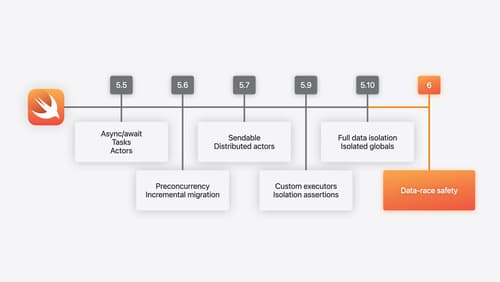What are ways NSPersistentContainer.loadPersistentStores can fail?
Asked on 2024-08-07
1 search
The NSPersistentContainer.loadPersistentStores method can fail for several reasons. Here are some common scenarios:
-
Invalid Store URL: If the URL provided for the persistent store is invalid or inaccessible, the method will fail to load the store.
-
Incompatible Model: If the model used to create the persistent store is incompatible with the existing store (e.g., due to schema changes that haven't been migrated), the loading process will fail.
-
File System Issues: Problems with the file system, such as lack of permissions or insufficient disk space, can cause the loading of the persistent store to fail.
-
Corrupted Store: If the persistent store file is corrupted, the method will not be able to load it successfully.
-
Configuration Errors: Misconfigurations in the persistent store description, such as incorrect options or settings, can lead to failure.
For more detailed information on customizing model containers and data stores, you can refer to the sessions from WWDC 2024:
- What’s new in SwiftData (04:29)
- Create a custom data store with SwiftData (04:50)
These sessions cover various aspects of data persistence and customization in SwiftData, which might provide additional insights into handling persistent stores.

Create a custom data store with SwiftData
Combine the power of SwiftData’s expressive, declarative modeling API with your own persistence backend. Learn how to build a custom data store and explore how to progressively add persistence features in your app. To get the most out of this session, watch “Meet SwiftData” and “Model your schema with SwiftData” from WWDC23.

What’s new in Swift
Join us for an update on Swift. We’ll briefly go through a history of Swift over the past decade, and show you how the community has grown through workgroups, expanded the package ecosystem, and increased platform support. We’ll introduce you to a new language mode that achieves data-race safety by default, and a language subset that lets you run Swift on highly constrained systems. We’ll also explore some language updates including noncopyable types, typed throws, and improved C++ interoperability.

What’s new in SwiftData
SwiftData makes it easy to add persistence to your app with its expressive, declarative API. Learn about refinements to SwiftData, including compound uniqueness constraints, faster queries with #Index, queries in Xcode previews, and rich predicate expressions. Join us to explore how you can use all of these features to express richer models and improve performance in your app. To discover how to build a custom data store or use the history API in SwiftData, watch “Create a custom data store with SwiftData” and “Track model changes with SwiftData history”.
